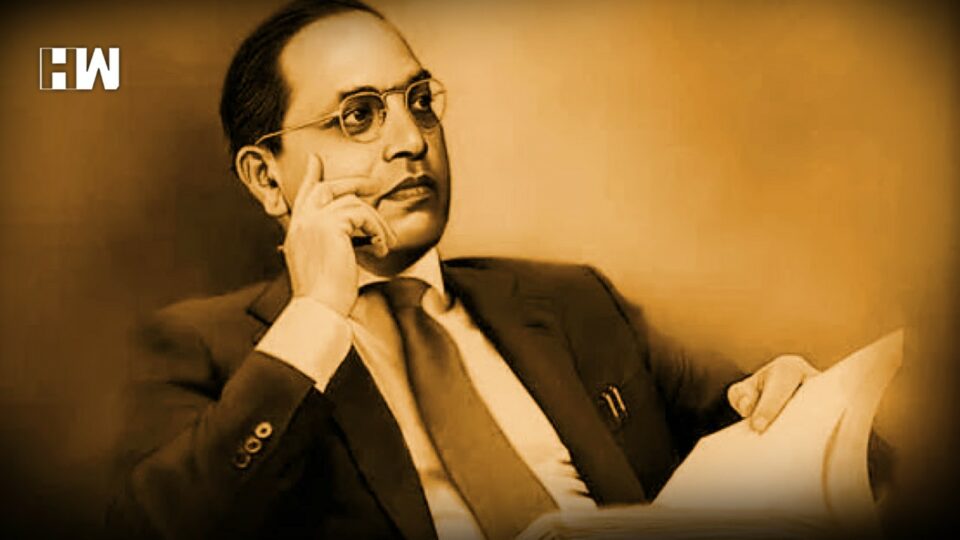On October 14, 1956, BR Ambedkar along with his 3,65,000 Dalit followers made history when they decided to embrace Buddhism and leave Hindusim
New Delhi: Dr. Bhimrao Ramji Ambedkar was an Indian Jurist, social reformer, and political leader. He headed the committee drafting the Constitution of India from the Constituent Assembly debates in the first cabinet of Jawaharlal Nehru. He served as Law and Justice Minister. He inspired the Dalit Buddhist Movement after he renounced Hinduism.
Why did he renounced Hinduism?
On October 14, 1956, BR Ambedkar along with his 3,65,000 Dalit followers made history when they decided to embrace Buddhism and leave Hindusim. Ambedkar found the varna or caste system, propagated by Hinduismas a threat to freedom. Ambedkar was frustrated by the caste system at such an extreme level he decided to opt for conversion. He also opined that conversion was the only method for Dalits to denounce caste system.
Ambedkar addressed the Mahars, a segment of the population regarded as untouchable, apprising them of his decision to convert 20 years before he actually converted. In a lengthy and influential speech he appealed people to convert for equality. He said, “… religion is for man and not man for religion. For getting human treatment, convert yourselves. Convert for getting organised. Convert for becoming strong. Convert for securing equality. Convert for getting liberty.”
Apart from the deep inheritance of caste system in hinduism, the reason for Ambedkar choosing Buddhism could be that Buddhism met his core values of rationality, morality and justice. As per religion studies specialist Christopher Queen, Buddhism helped Ambedkar realise his requirements – “the exercise of individual choice based on reason and historical consciousness.”
The Dalit Buddhist movement, also known as Navayana or Neo-Buddhism, was Ambedkar’s reinterpretation of Buddhism. The “four noble truths” of conventional Buddhism were now rejected by this “new sect” of the religion, which was now reconstructed in terms of class conflict and social justice.
Also Read: Tribute To Dr. Bhim Rao Ambedkar
Where & Why He Chose To Be Converted?
For his conversion Ambedkar chose Nagpur city. Now the question arises, ‘Why Nagpur?’ Ambedkar’s move of converting with his followers in Nagpur was criticized by many. But the considerable reason of him choosing Nagpur was the city being the birthplace of Rashtriya Swayamsevak Sangh (RSS). However, Dr. BR Ambedkar right next day after being converted cleared the air. He said that he had chosen the city not for the RSS, but for the ‘Nag’ people, who according to history, spearheaded the movement against the Aryan people and also propagated Buddhism.
Likening Dalits to the Nag people, he said, “The Nag people spread the teaching of Lord Buddha all over India. Thus we are like Nag people. It seems that the Nag people lived chiefly in Nagpur and the surrounding country. So they call this city Nagpur, meaning city of Nags… Nagpur was chosen because of this.”
Although, he did not lived much after conversion to practice religion, he led several thousands to adopt his re-interpretation of the religion. Deekshabhoomi in Nagpur, where Ambedkar organised the 1956 mass conversion, continues to be a holy place for Navayana Buddhism and has special significance for many people.
Since then, scholars have analyzed Ambedkar’s conversion to Buddhism in great detail. Many people think it was a political ploy. He had been pushing for Dalit separate electorates for years, but his efforts had been fruitless. In this sense, sociologists like Gail Omvedt think that his conversion to Buddhism was more of a political move.
It is also believed that cultural and historical fugures had influenced Ambedkar to renounce Hinduism. Figures like such as the Mauryan emperor Ashoka and the 12th century Dalit martyr of South India, Nandanar, who challenged the tenets of Hinduism.
But most crucially, Ambedkar genuinely believed that Buddhism possessed a logical and contemporary character. Buddhism is thought to have satisfied Ambedkar’s stringent standards for logic, morality, and justice.
As an independent media platform, we do not take advertisements from governments and corporate houses. It is you, our readers, who have supported us on our journey to do honest and unbiased journalism. Please contribute, so that we can continue to do the same in future.

